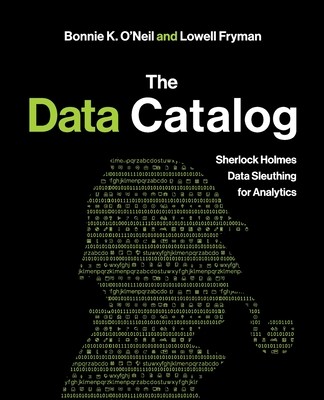
- We will send in 10–14 business days.
- Author: Bonnie K O'Neil
- Publisher: Technics Publications
- ISBN-10: 1634627873
- ISBN-13: 9781634627870
- Format: 19.1 x 23.5 x 1.6 cm, minkšti viršeliai
- Language: English
- SAVE -10% with code: EXTRA
Reviews
Description
Apply this definitive guide to data catalogs and select the feature set needed to empower your data citizens in their quest for faster time to insight.
The data catalog may be the most important breakthrough in data management in the last decade, ranking alongside the advent of the data warehouse. The latter enabled business consumers to conduct their own analyses to obtain insights themselves. The data catalog is the next wave of this, empowering business users even further to drastically reduce time to insight, despite the rising tide of data flooding the enterprise.
Use this book as a guide to provide a broad overview of the most popular Machine Learning (ML) data catalog products, and perform due diligence using the extensive features list. Consider graphical user interface (GUI) design issues such as layout and navigation, as well as scalability in terms of how the catalog will handle your current and anticipated data and metadata needs.
This book is organized into three sections:
- Chapters 1 and 2 reveal the rationale for a data catalog and share how data scientists, data administrators, and curators fare with and without a data catalog.
- Chapters 3-10 present the many different types of data catalogs.
- Chapters 11 and 12 provide an extensive features' list, current trends, and visions for the future.
EXTRA 10 % discount with code: EXTRA
The promotion ends in 23d.14:18:21
The discount code is valid when purchasing from 10 €. Discounts do not stack.
- Author: Bonnie K O'Neil
- Publisher: Technics Publications
- ISBN-10: 1634627873
- ISBN-13: 9781634627870
- Format: 19.1 x 23.5 x 1.6 cm, minkšti viršeliai
- Language: English English
Apply this definitive guide to data catalogs and select the feature set needed to empower your data citizens in their quest for faster time to insight.
The data catalog may be the most important breakthrough in data management in the last decade, ranking alongside the advent of the data warehouse. The latter enabled business consumers to conduct their own analyses to obtain insights themselves. The data catalog is the next wave of this, empowering business users even further to drastically reduce time to insight, despite the rising tide of data flooding the enterprise.
Use this book as a guide to provide a broad overview of the most popular Machine Learning (ML) data catalog products, and perform due diligence using the extensive features list. Consider graphical user interface (GUI) design issues such as layout and navigation, as well as scalability in terms of how the catalog will handle your current and anticipated data and metadata needs.
This book is organized into three sections:
- Chapters 1 and 2 reveal the rationale for a data catalog and share how data scientists, data administrators, and curators fare with and without a data catalog.
- Chapters 3-10 present the many different types of data catalogs.
- Chapters 11 and 12 provide an extensive features' list, current trends, and visions for the future.


Reviews